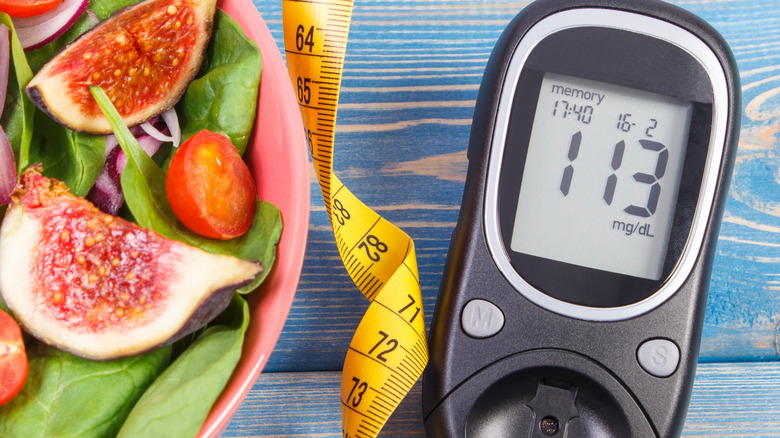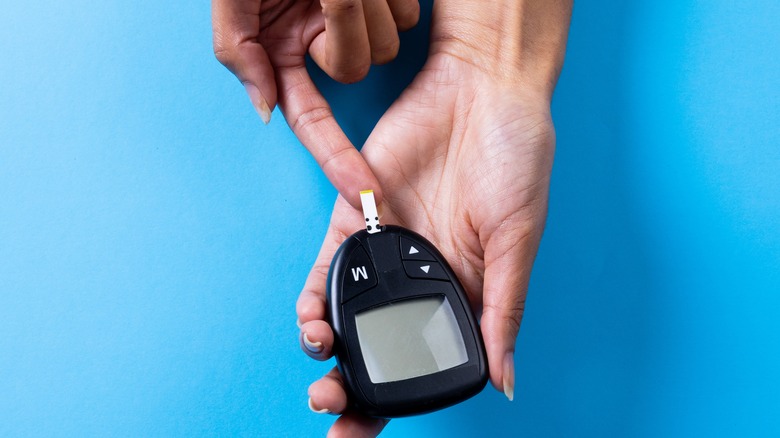How To Properly Use A Glucometer
A key aspect of being a diabetic and living with fluctuating blood sugar levels is properly managing diabetes (via Healthline). This includes monitoring your glucose levels. This is when a glucometer comes in handy. A glucometer, also known as a blood glucose meter, is a portable device to measure the amount of blood sugar in your body. For Type 1 diabetes, this is particularly done four or more times a day before and after meals. However, for those with Type 2, this decision usually relies on your doctor.
Monitoring glucose levels through blood is a more effective way of keeping track of sugar, and has now taken over the more traditional forms, such as measuring it through the urine, explains MedlinePlus. There are two main types of glucometers: standard and continuous glucose monitors (CGMs), according to Forbes. Standard glucometers are ideal for those who require infrequent monitoring of sugar levels. On the other hand, CGMs are more reliable for Type 1 diabetics, who need proper monitoring of glucose levels due to constant varying levels.
The best way to use glucometers
Glucometers usually come with an instruction manual and offer guidance on how to check if you have low or high blood sugar, according to Verywell Health. The blood sample is generally taken from a finger to check your blood sugar levels, but depending on the device, you can even draw blood from your thighs or arms.
In order to use a blood glucose meter, begin by washing your hands and drying them thoroughly. Then proceed by pricking your fingertip using a lancet to check the glucose level. Each glucometer system comes with a pack of lancets and strips. Keep in mind, they are only meant for one-time use. Drop the blood on the edge of the strip and insert it into the glucometer. Once it's in, check the reading on the digital screen. Be sure to wipe off the excess blood on the pricked region and discard the strip and lancet. Certain medications, like acetaminophen or lisinopril, may interfere with the readings on CGMs (via Mayo Clinic). Therefore, discussing the appropriate method and reliability of test results with your doctor beforehand is best.


